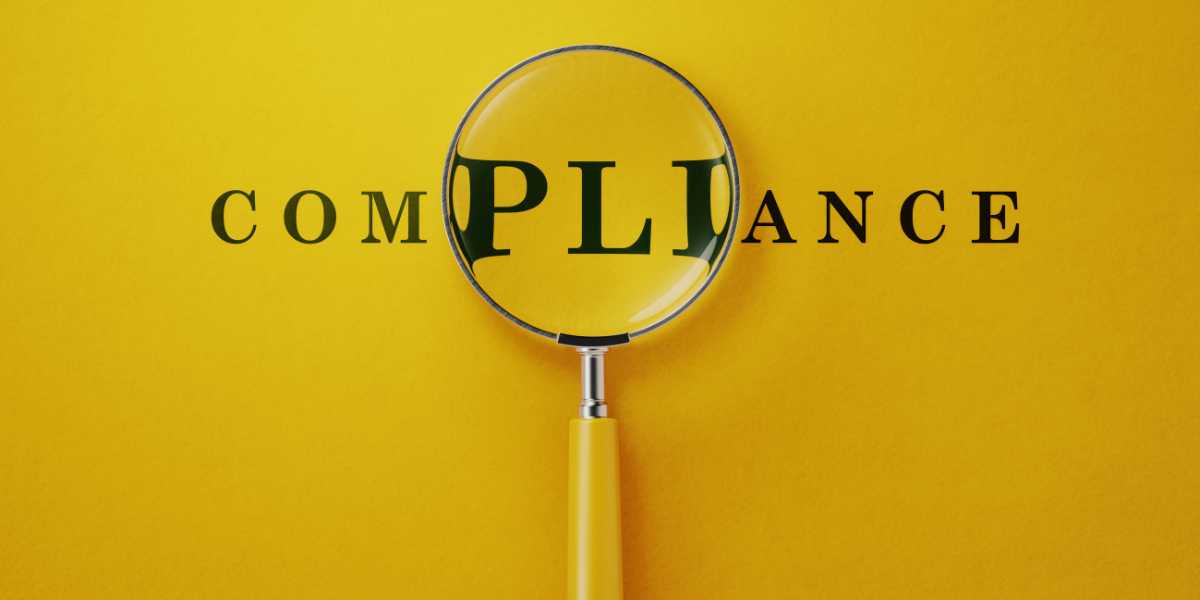The pharmaceutical industry in Canada, like in many other countries, is tightly regulated to ensure the safety and efficacy of drugs entering the market. For pharmaceutical companies, navigating the regulatory compliance landscape is not just about adhering to the guidelines but also about leveraging technology to streamline the process. Here, we delve into the intricacies of regulatory compliance within the Canadian pharmaceutical sector, underscoring the role of innovative technologies like AI in transforming regulatory pathways.
Understanding the Regulatory Framework
In Canada, the pharmaceutical regulatory framework is governed by Health Canada, the federal body responsible for ensuring that healthcare products marketed in Canada are safe, effective, and of high quality. The regulatory process for pharmaceuticals is both rigorous and comprehensive, designed to protect public health by ensuring that all drugs meet the necessary standards before they reach the market.
The cornerstone of the regulatory framework is the Food and Drugs Act and Regulations, which outline the requirements for the approval of new drugs in Canada. Companies seeking to introduce a new drug must submit a New Drug Submission (NDS) to Health Canada. This submission must provide detailed information, including results from pre-clinical and clinical studies, manufacturing details, and labeling information. The NDS is reviewed by Health Canada’s scientists to assess the safety, efficacy, and quality of the product.
Health Canada also provides a multitude of Guidance Documents that serve to help interpret the policies, governing statutes, and regulations. These documents are essential for pharmaceutical companies as they navigate the approval process. They cover various aspects of the submission process and include recommendations on scientific and technical information to be included in the submission.
Furthermore, the regulatory process involves several stages, starting from the pre-clinical trials, which are laboratory and animal studies that test the initial safety and efficacy of a new substance. Following successful pre-clinical testing, clinical trials can commence, which are systematic studies conducted in human subjects to further evaluate the drug’s safety and effectiveness.
The review process by Health Canada is thorough and can be lengthy, depending on the complexity of the drug and the nature of the data submitted. Health Canada utilizes a risk-based approach to review; the higher the risk, the more rigorous the review. Upon approval, the product receives a Notice of Compliance (NOC) and a Drug Identification Number (DIN), which allows the drug to be marketed in Canada.
The regulatory landscape in Canada also emphasizes post-market surveillance to monitor the effects of drugs after they have been approved. This involves tracking adverse reactions and other safety-related issues that might arise once the drug is used in the general population.
In essence, the regulatory framework in Canada is designed to ensure that all pharmaceutical products are rigorously evaluated for safety, efficacy, and quality before they can be accessed by Canadians. This process, while complex, is crucial for maintaining the high standards of healthcare products available in the market.
The Role of Technology in Streamlining Compliance
The integration of technology, particularly Artificial Intelligence (AI) and Robotic Process Automation (RPA), is revolutionizing the regulatory compliance landscape in the pharmaceutical industry. These technologies offer powerful tools to streamline the complex and often cumbersome process of regulatory submissions, thus accelerating the time-to-market for new drugs while ensuring compliance with regulatory standards.
AI and RPA systems enhance regulatory processes by automating routine tasks, improving data management, and ensuring that documentation meets regulatory standards. For example, AI can be employed to analyze large volumes of regulatory documents and extract relevant information, ensuring that submissions are complete and accurate. This capability is particularly beneficial in handling the extensive documentation required for New Drug Submissions (NDS) to Health Canada, which can often exceed 100,000 pages. AI systems can swiftly navigate through this data, identify relevant information, and organize it in a manner that complies with the stringent regulatory requirements.
RPA plays a critical role by automating repetitive and time-consuming tasks such as data entry and form filling. This not only speeds up the process but also reduces the likelihood of human errors that can occur with manual handling. For instance, RPA can be programmed to fill in forms based on data extracted by AI, ensuring that the information is entered accurately and consistently across all required documents.
Moreover, technology facilitates real-time collaboration among the various stakeholders involved in drug development and submission. Cloud-based platforms can integrate seamlessly with AI and RPA solutions, allowing team members from different locations, including scientists, regulatory experts, and project managers, to work together effectively. They can share documents, track changes, and manage submissions in a centralized space, enhancing the efficiency and transparency of the process.
The use of AI also extends to ensuring compliance with evolving regulations. Machine learning algorithms can be trained to recognize changes in regulatory guidelines and automatically adjust the processes and documents to reflect these changes. This adaptive capability is crucial given the dynamic nature of regulatory environments, where new guidelines and amendments are regularly introduced.
Another significant advancement is the use of natural language processing (NLP), a branch of AI that enables the system to understand and process human language. NLP can be used to analyze regulatory texts and extract critical data points and requirements, which can then be mapped to relevant sections in the submission documents. This ensures that all regulatory questions are addressed comprehensively, reducing the risk of compliance issues and potential delays in approval.
In addition to improving efficiency and accuracy, technology also offers enhanced security features vital for protecting sensitive data involved in pharmaceutical regulations. Encryption, secure access protocols, and data integrity checks are integral components of tech-driven regulatory systems, ensuring that confidential information remains protected against unauthorized access and breaches.
The adoption of technology in regulatory compliance not only streamlines the submission process but also significantly reduces the resource burden on pharmaceutical companies. It allows them to allocate more time and effort towards innovation and development rather than administrative tasks, ultimately benefiting the entire healthcare ecosystem.
In conclusion, the role of technology in streamlining pharmaceutical regulatory compliance is transformative. By harnessing AI, RPA, and other technological innovations, the pharmaceutical industry can navigate the complex regulatory landscape more efficiently and effectively, ensuring faster access to new therapies for patients while maintaining strict compliance with regulatory standards.
Key Features of AI-Powered Regulatory Systems
- Document Analysis and Management: AI systems can analyze documents from multiple sources, ensuring that all submissions are compliant with the specific regulatory requirements of Health Canada.
- Automation of Repetitive Tasks: RPA elements within these platforms can automate repetitive tasks such as data entry, reducing the potential for human error and speeding up the submission process.
- Real-Time Collaboration: Advanced RIMS like RoboReg allow for real-time collaboration among various stakeholders involved in drug development, including chemists, biologists, and clinical researchers, facilitating a more coordinated approach to document management.
Challenges and Considerations
While the integration of technology in pharmaceutical regulatory compliance offers significant benefits, there are several challenges and considerations that must be addressed to ensure effective implementation and ongoing success. These challenges can impact the efficiency of regulatory processes and require careful management to avoid potential pitfalls.
Data Security and Privacy Concerns: One of the most significant challenges in adopting technology solutions like AI and RPA in regulatory compliance is ensuring the security and privacy of sensitive data. Pharmaceutical companies deal with confidential information, including patient data from clinical trials, proprietary drug formulas, and detailed manufacturing processes. The potential for data breaches or unauthorized access poses a considerable risk, particularly as data breaches can lead to substantial financial penalties and loss of public trust.
To mitigate these risks, companies must implement robust cybersecurity measures, including encryption, secure data storage solutions, and strict access controls. Regular security audits and compliance checks are essential to ensure that the systems adhere to the latest security standards and regulations, such as GDPR in Europe or PIPEDA in Canada.
Compliance with Evolving Regulatory Standards: Regulatory environments are not static; they evolve as new scientific knowledge and technologies emerge. Keeping up with changes in regulatory requirements and ensuring that technology solutions are compliant can be challenging. For example, Health Canada frequently updates its guidelines to incorporate new scientific methods and ethical considerations, and each change may require adjustments in the technology used for regulatory submissions.
Pharmaceutical companies must ensure that their AI and RPA systems are flexible enough to adapt to regulatory changes. This may involve regular updates to the software and algorithms and ongoing training for both the AI models and the human teams that work with them.
Integration with Existing Systems: Many pharmaceutical companies operate legacy IT systems that may not seamlessly integrate with newer AI and RPA technologies. The integration challenge can lead to significant disruptions and inefficiencies, particularly if data cannot be easily transferred between old and new systems.
Overcoming this issue often requires substantial initial investments in technology upgrades or customization of new technologies to work effectively with legacy systems. It also involves training staff to operate and manage these integrated systems effectively, ensuring that the technology adds value without disrupting existing workflows.
Skepticism and Resistance to Change: Technological transformations often face internal resistance, with employees skeptical about new systems and their potential to replace human jobs. This skepticism can hinder the adoption and effective utilization of AI and RPA in regulatory compliance.
Addressing this challenge involves clear communication about the benefits of technology, not only for the company’s efficiency but also for enhancing the employees’ roles. Training and development programs can help staff transition to new ways of working, emphasizing that technology is a tool to aid their work, not a replacement.
Ensuring Accuracy and Reliability: While AI and RPA can dramatically improve the efficiency and accuracy of regulatory documentation, the technology is only as good as the data and programming it relies on. Errors in data input or flaws in algorithm design can lead to incorrect document filings or compliance issues, potentially delaying drug approvals.
To ensure accuracy and reliability, pharmaceutical companies must invest in high-quality data collection and processing systems. They must also conduct rigorous testing of AI and RPA systems before full-scale implementation to ensure that they function as intended and meet all regulatory requirements.
The integration of AI and RPA into regulatory compliance processes represents a significant shift in how pharmaceutical companies approach drug submissions in Canada. By automating and optimizing the document management process, these technologies not only reduce the time and cost associated with regulatory submissions but also improve accuracy and compliance. As the regulatory landscape continues to evolve, embracing these technologies will be crucial for companies looking to remain competitive and successful in bringing new drugs to the Canadian market efficiently.




